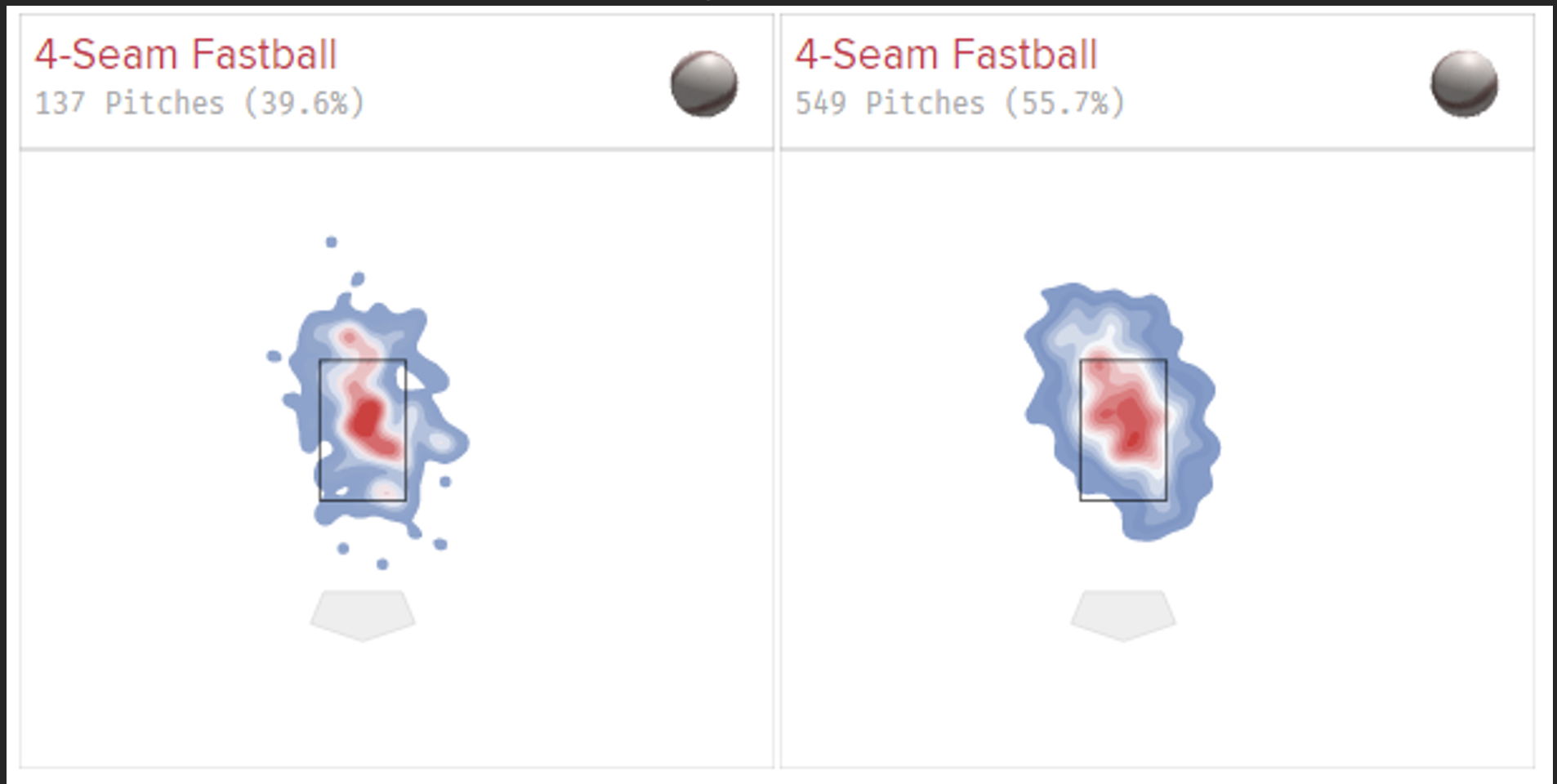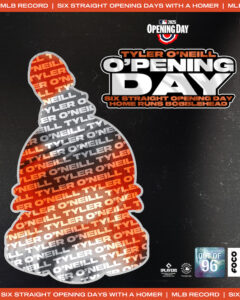There was an aura of optimism surrounding Dean Kremer heading into the 2021 season, and justifiably so. After being sent over as one of the five pieces the Dodgers gave up to acquire Manny Machado in 2018, Kremer capped off that season in Bowie with panache; his 12.2 K/9 between A/AA was the fourth highest strikeout rate in the entirety of the Minor Leagues and ahead of names like Michael Kopech, Dylan Cease, and Matt Manning. His ERA and strikeout rate took hits in 2019 but still produced a statline commensurate with a legitimate pitching prospect.
2020 did 2020 things and COVID cancelled the Minor League season, but Kremer was called upon to fill the roster spot vacated by the Tommy Milone trade and made four starts. Aside from his debut in Fenway Park wherein he allowed seven earned runs, he pitched incredibly well! Two starts against the Yankees (a playoff team) and one against the AL Champion Rays ended with three earned runs and 20 strikeouts in 16 innings.
He dazzled us not just with pitches, but his hair as well. It’s tangential but I’d be totally remiss not to mention that dude’s hair, I mean my word it’s majestic. Like a Walt Whitman poem that’s come to life. Flowing like a happy little stream in a Bob Ross painting. But I digress.
2021 was as harsh to Kremer as 2020 was kind. His ERA ballooned to 7.55, and eventually he was placed on the dreaded Baltimore-to-Norfolk shuttle, tales of which nobody dare speak.
Even worse was that the peripherals suggested that bad luck was far from the main culprit. This sparks the question: what happened to Dean Kremer in 2021?
A Pitch and a Barrel
If you look at Kremer’s peripherals, a great deal of them were largely unchanged or improved slightly from 2020: his BABIP was similar (.307 to .296), his ground ball percentage was identical, and his fly ball/line drive numbers were within four percent of his 2020 ratios. Walks had been a problem for Kremer, but he managed to decrease his BB/9 from 5.79 to 4.19. If all of that is the case, what exactly went awry?

c/o Baseball Savant
To put it lightly, batters hit Kremer’s pitches hard. Like, really hard. His barrel rate increased by nearly 75%, which was good(?) enough to land him in the bottom 1% of Major League pitchers. It is not hyperbole to say that almost nobody was hit harder than Dean Kremer was last year. You’ll also notice increases in exit velocity and launch angle, the latter being especially problematic. His hardest hit batted ball, a 119.4 MPH missile off of the bat of Giancarlo Stanton (of course), was actually a double play ball thanks to Maikel Franco.
A 21-degree launch angle is almost exactly within the ideal range hitters wish to achieve, so to allow those types of batted balls with such frequency makes it nigh impossible to succeed at the highest level.
To further get into the “why”, I took a closer look at his pitches on an individual basis.
Fastball – The (Wrong) Way
He made up his mind, and he started throwing.
Dean Kremer does not have premium velocity, but makes up for it with an above average spin rate that makes his fastball appear “heavy,” and that makes it a viable big league pitch. One would immediately look to see if a drop in velocity and/or spin rate was the cause for his woes last season, but neither was the case; both were consistent with his 2020 numbers.
Hmm, that can’t be it. Let’s take a look at his heat maps from both seasons:

c/o Baseball Savant
The stark difference between the two is shown in red; Kremer’s fastball found a more expansive home at the top and middle of the strike zone. As evidenced by the darker shade of red in the 2020 heat map, Kremer did like to throw his fastball up, but it was concentrated to a smaller area than it was last season. The fastball also crept its way down and in more frequently, which is in the wheelhouse of a right-handed power hitter with pull tendencies. Even pitchers with 80 velocity would struggle to get outs consistently when throwing pitches in those areas so often, so it’s no surprise that batters teed off on Kremer last season.
Did this bleed into his other pitches, or was this problem solely associated with his fastball?
The Curve Ain’t Curvin’
Unfortunately, it did carry over to his other pitches, such as his curveball.

c/o Baseball Savant
The 2020 heat map on the left looks great; there’s very little red, and a lot of his curveballs were down and out of the zone. Kremer did continue to pound the curve into the dirt in 2021, but there’s a dark red splotch that popped up that covers most of the bottom edge of the strike zone. Simply put, you do not want to throw a lot of curveballs there. Pale red makes its way further up the zone, including a hot spot that’s up and in for right handed batters. This would explain why the average exit velocity on his curveballs jumped from 85.9 to 91.3 MPH, and why his curveball went from having the lowest xWOBA in his arsenal (.276) to being tied for the highest (.382).
Looking at the fastball and curveball heat maps will reveal yet another piece to this puzzle: something changed with his pitch distribution. What’s up with that?
The Wrong Mix?

c/o Baseball Savant
There’s quite a few differences here! The starkest of which is his fastball distribution. For some reason, he increased his fastball usage by nearly 20% from 2020, when he was much more generous in spreading the love to his secondary pitches. As I alluded to earlier, his velocity and spin rate didn’t change much, but you can see how an increased diet of fastballs located in prime hitting areas led to an outlandishly high ERA.
Two other things stick out: the ostensible swap of his curveball and cutter, and the abandonment of his sinker in exchange for more change-ups. The former is quite surprising given it was his most effective pitch last season, but when reviewing the curveball heat maps, could it be that Kremer lost the feel and command of the pitch and decided to shelve it on occasions? The .336 xWOBA on his cutters was far and away the lowest of his arsenal last year, so it’s possible that he simply just became more comfortable throwing that pitch. The change-up is a work in progress. He threw it with triple the frequency as he did in 2020, but the results were poor (although his xSLG and xWOBA indicate this may be in some part to bad luck).
While Kremer’s 2021 was disappointing to Orioles fans who were hopeful that he’d build upon his 2020 starts, I still believe there is a productive MLB starting pitcher here. It is entirely possible that the 2020 numbers are aided by the smaller sample but to me, the foundation that helped make him a top 10 prospect in the organization are still present, but he must resolve his propensity to leave pitches in prime hitting zones. His curveball doesn’t have to be his primary put away pitch, but he cannot leave so many hanging at the bottom of the zone or he will continue to be punished.
The fact that his velocities and spin rates remained stable is a good sign. The change-up seems to be a pitch he’s working on, and if that improves and he locates his other pitches more like his 2020 self, we just might see Dean Kremer become a solid and dependable Major League pitcher.









